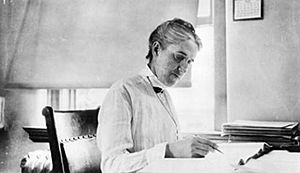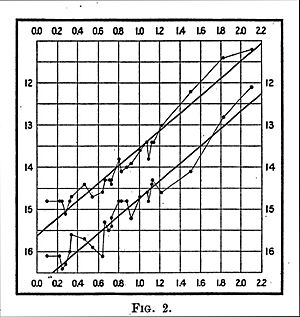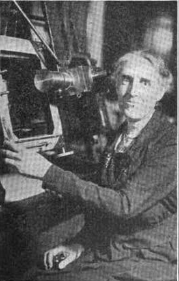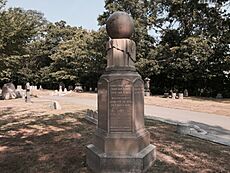Henrietta Swan Leavitt facts for kids
Quick facts for kids
Henrietta Swan Leavitt
|
|
|---|---|
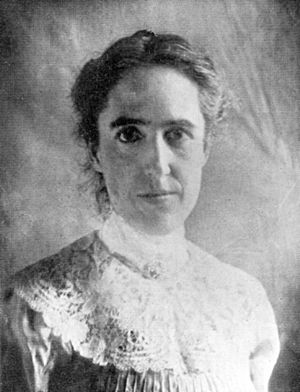 |
|
| Born | July 4, 1868 Lancaster, Massachusetts, U.S.
|
| Died | December 12, 1921 (aged 53) Cambridge, Massachusetts, U.S.
|
| Alma mater | Radcliffe College, Oberlin College |
| Known for | Leavitt's law: the period-luminosity relationship for Cepheid variables |
| Scientific career | |
| Fields | Astronomy |
| Institutions | Harvard University |
Henrietta Swan Leavitt (born July 4, 1868 – died December 12, 1921) was an American astronomer. She made a huge discovery that helped us understand the size of the universe.
Henrietta worked at the Harvard College Observatory. Her job was to look at special photos of stars, called photographic plates. She measured and listed how bright these stars were.
This important work led her to find a special connection. She discovered that certain stars, called Cepheid variables, have a link between their brightness and how long it takes for their light to change. This is called the period-luminosity relationship.
Leavitt's discovery gave astronomers the first "standard candle". Imagine a candle that always burns with the same brightness. If you know how bright it truly is, you can tell how far away it is by how dim it looks. Cepheid variables became like these standard candles in space. They helped scientists measure the distance to faraway galaxies for the first time.
Before Henrietta's work, astronomers could only measure distances to stars that were relatively close. These methods worked for stars up to a few hundred light years away. Her discovery allowed them to measure distances up to about 20 million light years! This helped us learn that our own galaxy, the Milky Way, is about 100,000 light years wide.
Later, another astronomer named Edwin Hubble used Leavitt's discovery. He combined it with other findings to show that the universe is actually getting bigger, or expanding.
Contents
About Henrietta Leavitt
Her Early Life and School
Henrietta Swan Leavitt was born in Lancaster, Massachusetts. Her father was a church minister. She came from a family of early English settlers in America. Henrietta was a very religious person throughout her life.
She went to Oberlin College and then to Radcliffe College, which was connected to Harvard University. She studied many subjects, like Latin, art, and math. In her last year of college, she took an astronomy class and loved it.
Around this time, Henrietta started working at the Harvard College Observatory. She was one of the "women computers". In the early 1900s, women were not allowed to use the big telescopes. So, they were hired to study the photographic plates. They measured and cataloged the brightness of stars.
Henrietta earned credits for her work at the observatory. But she never finished a higher degree in astronomy. She later became the first "Curator of Astronomical Photographs" at Harvard. She also traveled to Europe and worked as an art assistant. During this time, she became ill and started to lose her hearing.
Her Work in Astronomy
Henrietta came back to the Harvard College Observatory in 1903. At first, she wasn't paid for her work. Later, she earned a very small amount, about 30 cents an hour. She was known for being very hardworking and dedicated to her family, church, and career. She worked with Annie Jump Cannon, another astronomer who was also deaf.
Her boss, Edward Charles Pickering, asked Henrietta to study variable stars. These are stars whose brightness changes over time. She looked at stars in the Magellanic Clouds, which are small galaxies near our own. She found 1,777 variable stars. In 1908, she published her findings. She noticed that the brighter variable stars took longer to complete their cycle of changing brightness.
In 1912, Henrietta looked more closely at 25 Cepheid variable stars in the Small Magellanic Cloud. She made a graph that showed a clear pattern. She realized that there was a simple relationship between how bright these stars were and how long their brightness cycle lasted.
She made an important assumption: all the Cepheids in the Small Magellanic Cloud were about the same distance from Earth. This meant that if a star looked brighter, it was truly brighter. This idea allowed her to figure out that the longer a Cepheid's period (how long its brightness changes), the brighter it truly is. This became known as "Leavitt's law".
Henrietta also helped create the Harvard Standard for measuring star brightness. This was a system that helped astronomers compare the brightness of stars.
In 1913, she discovered T Pyxidis. This is a special type of star called a recurrent nova. It explodes and gets very bright many times.
Henrietta was a member of several important science groups. In 1921, she became the head of stellar photometry at the observatory. This meant she was in charge of measuring star brightness. Sadly, she passed away from cancer later that year.
Her Scientific Impact
Many scientists agree that Henrietta Leavitt's discovery was very important. It changed how we understand the universe. Her "Leavitt's law" made Cepheid stars the first "standard candle" in astronomy. This allowed scientists to figure out the distances to stars that were too far away to measure by other methods.
Soon after, Cepheid stars were found in other galaxies, like the Andromeda galaxy. This helped prove that these "spiral nebulae" were not just clouds in our own galaxy. They were separate galaxies, very far away.
Leavitt's discovery helped astronomers like Edwin Hubble understand the true size and structure of the universe. Hubble often said that Henrietta Leavitt deserved the Nobel Prize for her amazing work. However, the Nobel Prize is not given to people after they have passed away.
Cepheid variables allow astronomers to measure distances up to about 20 million light years. Even greater distances can now be measured using other methods.
Her Illness and Passing
Henrietta's work at Harvard was often interrupted. She had health problems and family duties. Her death at age 53 from stomach cancer was a sad event for her colleagues. Her friend, Solon I. Bailey, wrote that she was a joyful person who saw beauty in life.
Henrietta is buried in the Leavitt family plot in Cambridge, Massachusetts. There is a plaque on the family monument that remembers her and her siblings, Mira and Roswell.
Honors After Her Death
- An asteroid (5383 Leavitt) and a crater on the Moon (Leavitt) are named after her. This honors deaf astronomers.
- One of the ASAS-SN telescopes in Texas is named in her honor.
Books and Plays About Her
- Lauren Gunderson wrote a play called Silent Sky. It tells the story of Leavitt's life and work at Harvard.
- George Johnson wrote a book called Miss Leavitt's Stars. It highlights the achievements of women in science through Henrietta's story.
- Robert Burleigh wrote a book for younger kids called Look Up!: Henrietta Leavitt, Pioneering Woman Astronomer.
Images for kids
-
The Harvard Computers, a group of women who worked for the astronomer Edward Charles Pickering. This group included other famous astronomers like Annie Jump Cannon.
See also
 In Spanish: Henrietta Swan Leavitt para niños
In Spanish: Henrietta Swan Leavitt para niños


